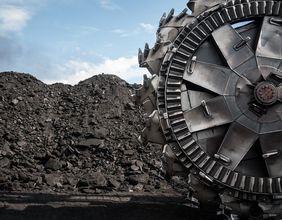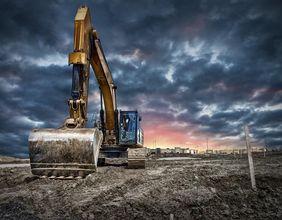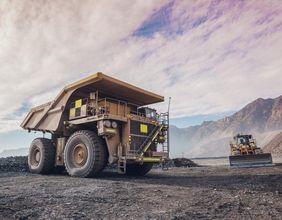Highlights:
- Definition: PP&E stands for Property, Plant, and Equipment, which are tangible long-term assets used in business operations.
- Components: It includes land, buildings, machinery, and other physical assets essential for revenue generation.
- Accounting Importance: PP&E is a key element of a company's balance sheet, reflecting its investment in operational infrastructure and its ability to generate future profits.
Property, Plant, and Equipment (PP&E) represent the tangible, long-term assets that organizations use in their operations to produce goods or services. These assets are integral to business operations and are considered non-current assets, meaning they provide benefits over several accounting periods rather than being consumed in the short term.
PP&E is a critical component of a company’s financial framework, representing its investment in physical infrastructure and operational capacity. This category of assets plays a crucial role in sustaining production, enabling business growth, and generating revenue.
Components of PP&E
PP&E encompasses a variety of physical assets, all of which are vital for business operations. The key components include:
- Land
Land is a unique and often non-depreciable component of PP&E. Businesses acquire land for various purposes, such as constructing facilities, parking lots, or storage spaces. The value of land typically remains stable or appreciates over time, making it a valuable investment.
- Buildings
Buildings include structures like factories, warehouses, and office spaces. These assets are crucial for housing business operations, production processes, and administrative functions. Unlike land, buildings are subject to depreciation over their useful lives.
- Machinery and Equipment
Machinery and equipment are the tools and machines used in the production process. Examples include manufacturing machines, vehicles, and specialized tools. These assets are essential for producing goods and delivering services efficiently.
- Furniture and Fixtures
Furniture and fixtures include desks, chairs, shelving units, and other items that support daily business activities. While smaller in scale compared to other PP&E components, they are equally important for operational functionality.
- Improvements and Leasehold Assets
This category includes enhancements made to properties, such as landscaping, lighting, or renovations. Leasehold improvements, in particular, refer to changes made to rented properties to better suit the lessee’s business needs.
Accounting for PP&E
Proper accounting of PP&E is essential for accurately reflecting a company’s financial position. These assets are recorded on the balance sheet at their historical cost, which includes the purchase price and any costs necessary to bring the asset to operational condition.
- Depreciation
Most PP&E assets, except land, are subject to depreciation. Depreciation spreads the cost of an asset over its useful life, representing the wear and tear or obsolescence that occurs over time. Common depreciation methods include:
- Straight-Line Depreciation: Allocates an equal expense each year.
- Declining Balance Depreciation: Allocates a larger expense in the early years of the asset’s life.
- Units of Production Depreciation: Bases depreciation on usage or production levels.
- Impairment
If an asset’s value decreases significantly due to market conditions, technological changes, or physical damage, it may be subject to impairment. Impairment reflects a reduction in the carrying value of the asset to align with its recoverable amount.
- Disposal
When PP&E is sold, retired, or otherwise disposed of, the gain or loss from the transaction is recognized on the income statement. This reflects the difference between the sale price and the asset’s book value.
Role of PP&E in Financial Analysis
PP&E is a key indicator of a company’s operational and financial health. Analysts and investors closely monitor PP&E to evaluate a firm’s long-term investment in infrastructure and its ability to generate future revenues.
- Asset Turnover Ratio
This metric assesses how efficiently a company uses its PP&E to generate revenue. A higher ratio indicates better utilization of assets.
- Capital Expenditures (CapEx)
Capital expenditures reflect the investments made in acquiring or upgrading PP&E. An increase in CapEx signals growth or expansion, while a decline might indicate cost-cutting or operational stagnation.
- Return on Assets (ROA)
ROA measures the profitability of a company relative to its total assets, including PP&E. It provides insights into how effectively a company is leveraging its investments to generate earnings.
Challenges in Managing PP&E
Managing PP&E involves several challenges, including:
- Maintenance Costs
Keeping machinery, equipment, and buildings in optimal condition requires regular maintenance, which can be costly. Neglecting maintenance may lead to asset impairment or operational disruptions.
- Technological Obsolescence
Rapid advancements in technology can render existing equipment outdated, necessitating frequent upgrades or replacements.
- Accurate Valuation
Determining the accurate value of PP&E can be complex due to factors like depreciation, impairment, and market fluctuations.
PP&E in Different Industries
The composition and significance of PP&E vary across industries:
- Manufacturing: Machinery and equipment dominate PP&E due to their central role in production.
- Real Estate: Land and buildings are the most prominent assets.
- Retail: Fixtures, leasehold improvements, and inventory storage facilities are key components.
Conclusion
PP&E, or Property, Plant, and Equipment, is a cornerstone of business operations and financial management. These tangible assets enable companies to produce goods, deliver services, and achieve long-term growth. Understanding the components, accounting processes, and financial implications of PP&E is crucial for evaluating a company’s operational capabilities and investment strategies. Through effective management, businesses can maximize the value derived from their PP&E and maintain a competitive edge in their respective industries.






